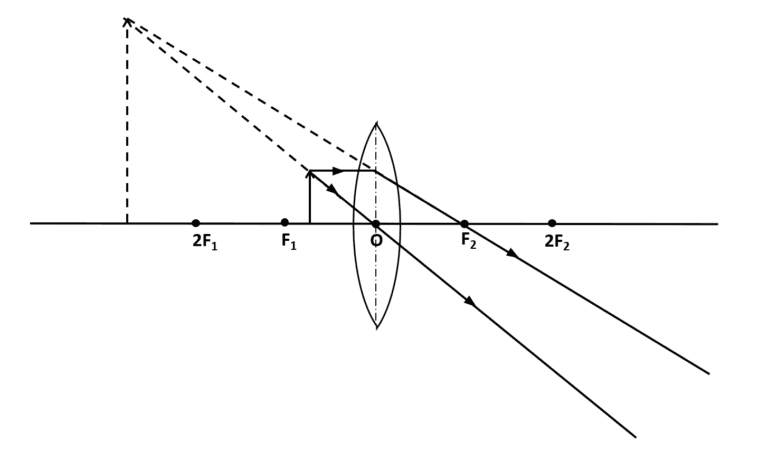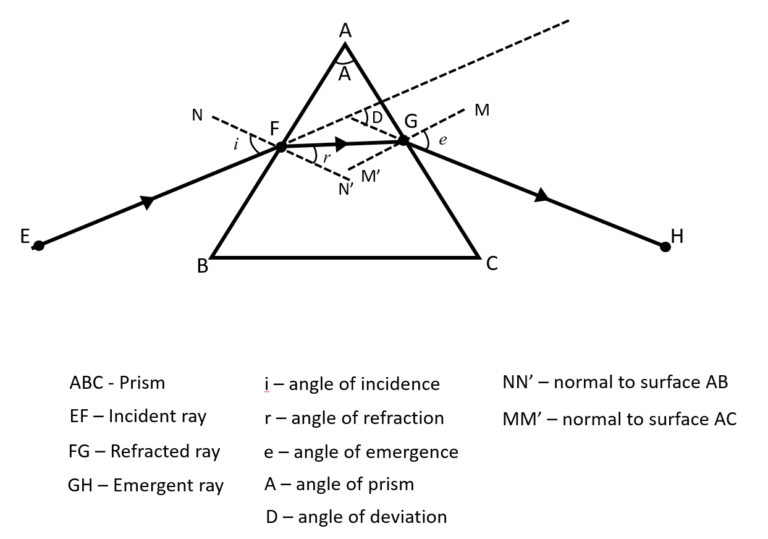PRACTICE PAPER -2 CLASS : X SUBJECT: SCIENCE (only PHYSICS question shown here) (Based on Half Yearly Syllabus) M.M.: 80 DURATION: 3 HRS |
GENERAL INSTRUCTIONS: (i) All questions are compulsory. (ii) The question paper has five sections and 12 questions. All questions are compulsory. (iii) Section–A has 4 MCQs and 2 assertion-reason type of 1 mark each; Section–B has 1 questions of 2 marks each; and Section–C has 3 questions of 3 marks each; Section–D has 1 questions of 5 marks each; Section–E has 1 case based question of 4 marks. (iv) Internal choices have been provided in some questions. A student has to attempt only one of the alternatives in such questions. (v) For case study questions in section E, there is one choice in one subpart, with 3 questions based per case study. |
SECTION A (MCQs)
| Q1 | Power of the lens is -4D, its focal length is (a) 4 m (b) -40 m (c) -0.25 m (d) -25 m |
| Q2 | The optical phenomena, twinkling of stars, is due to (a) Atmospheric reflection (b) Total internal reflection (c) Atmospheric refraction (d) Total refraction |
| Q3 | A cell, a resistor, a key and ammeter are arranged as shown in following the circuit diagrams.
Which circuit shows the correct position of ammeter in the circuit? (a) Circuit (i) (b) circuit (ii) (c) Circuit (iii) (d) All the circuits are correct |
| Q4 | What is the correct order of the phenomenon involved in the formation of a rainbow? (a) Reflection, refraction and dispersion (b) Refraction, dispersion and internal reflection (c) Refraction, scattering and internal reflection (d) Dispersion, scattering and internal reflection |
Q5 to Q6 are assertion-reasoning based questions. These consist of two statements – Assertion (A) and Reason (R). Answer these questions selecting the appropriate options given below: (a) Both A and R are true and R is the correct explanation of A. (b) Both A and R are true but R is not the correct explanation of A. (c) A is true but R is false. (d) A is false but R is true. |
| Q5 | Assertion (A): The mirrors used in search lights are concave spherical. Reason (R): In a concave spherical mirror the image formed is always virtual. |
| Q6 | Assertion (A): It is not possible to see a virtual image by eye. Reason (R): The rays that seem to emanate from a virtual image do not in fact emanate from the image. |
SECTION B
Q7 to Q7 are very short answer questions
Q7 | If the speed of light in vacuum is \( 3\times 10^{8} \;ms^{-1}\),find the speed of light in a medium of absolute refractive index 1.5.ORA transparent medium A floats on another transparent medium B.When a ray of light travels obliquely from medium A to B, the refracted raybends away from the normal. Which of these two media is optically denser and why? |
SECTION C
Q8 to Q10 are short answer questions
Q8 | (a) Define the SI unit of potential difference.(b) What are mA and \(\mu\) A ? How are they related to ampere(A) ?(c) A charge of 20 C passes through a wire which is maintained at a potential difference of 5 V. Calculate the amount of work in moving the charge across the wire ? |
Q9 | The image of a candle flame formed by a lens is obtained on a screen placed on the other side of the lens.If the image is three times the size of the flame and the distance between lens and image is 80 cm,at what distance should the candle be placed from the lens?What is the nature of the image and the focal length of the lens? |
Q10 | A convex lens of focal length 20 cm can produce a magnified virtual image. Is this a correct statement?If yes, then specify the position of the object and draw a ray diagram to support your answer.ORAn object 5 cm in length is placed 20 cm in front of a convex mirror of radius of curvature 30 cm.Find the position, nature and size of the image formed. |

SECTION D
Q11 to Q11 are long answer questions
Q11 | Explain the refraction of light through a triangular glass prism using a labelled ray diagram. Mark the following in the diagram:A – Angle of prism,D – Angle of deviation,i – Incident angler – Angle of refraction,e – Emergent angleAlso label the Incident, Refracted and the Emergent raysDefine the angle of deviation. |

SECTION E
Q12 to Q12 are case-based / data-based questions with 2 to 3 short sub-parts.
Internal choice is provided in one of these sub-parts
Q12 | There are mainly three common refractive defects of vision These are(i) Myopia or near-sightedness(ii) Hypermetropia or far – sightedness(iii) Presbyopia.Myopia is also known as near-sightedness. A person with myopia can see nearby objects clearly but cannot see distant objects distinctly. A person with this defect has the far point nearer than infinity. Such a person may see clearly up to a distance of a few metres.Hypermetropia is also known as far -sightedness. A person with hypermetropia can see distant objects clearly but cannot see nearby objects distinctly. (a) Identify the defect of vision shown in the diagram. (1)(b) How can this defect be corrected? (1)(c) State 2 causes of Presbyopia. (2)OR(c) Identify the parts A, B, C and D in the diagram of the human eye provided below. (2)
|